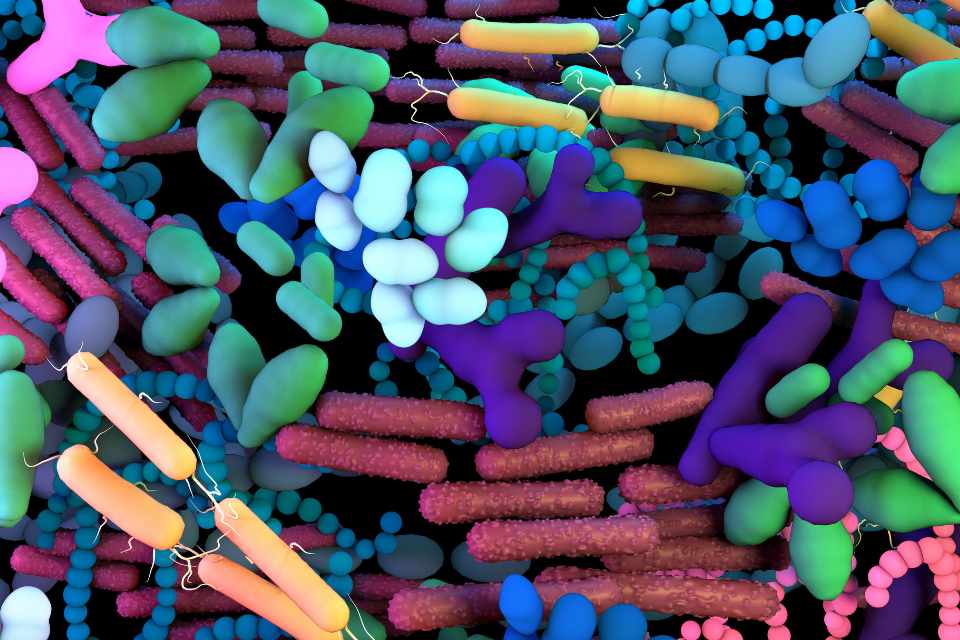It is well known that people with the autoimmune disorder coeliac disease, must adhere to a gluten-free (GF) diet. But, if you don’t have coeliac disease is it really necessary to avoid gluten? After all, gluten-containing foods are staples in the western diet. And, people tell me that they really don’t want to give up bread, pasta, cereal, pastry or pizza. What will there be left to eat?
As a herbalist, I often help people with gut health problems. And this question does come up a lot. So let me explain why gluten can be a problem and what you can eat instead.
Gluten is a protein found in wheat, rye, barley and some oats. Products made from these grains, such as wheat flour also contain gluten. So going GF does eliminate quite a lot of staple foods.
In fact, it might be harder than you think to avoid eating gluten. If you check food labels, you will find that lots of packaged food contain hidden gluten in their ingredient list.
Which foods contain gluten?
Here are some examples of foods that may include a gluten-containing grain:
- bread and bread rolls, cakes, crackers, pastry and biscuits, pancakes, waffles and pizza
- most breakfast cereals except those made from rice or corn
- flour and flour products, such as pasta, couscous and semolina
- meat and fish products, such as burgers, sausages, luncheon meats, pates and spreads
- vegetable products such as tinned beans and soups
- sauces and condiments, such as mayonnaise, salad dressing, gravy, stock cubes and granules, spice mixes, mustards and preprepared sauces
- desserts such as ice cream, anything made with pastry and cheesecake
- beverages made from powder, instant coffee, Ovaltine and malted milk, and beers
- confectionaries such as chocolate and liquorice sweets
The problem is that most people with coeliac disease don’t know that they have it. So, for each person with a diagnosis, there are about 6 more that are undiagnosed. And, if you have coeliac disease but continue to eat gluten-containing food, then this can cause all sorts of health problems. You see the autoimmunity triggered by gluten doesn’t just affect the gut but also the brain and the skin. In fact, many people with coeliac disease don’t have gut health problems at all.
But this isn’t even the whole story. There is another potential problem for some people when eating grains. Some people have an intolerance to these foods. This is called non celiac gluten sensitivity. People with gluten sensitivity react to gluten but do not have coeliac disease. Although they do suffer some of the same symptoms. This intolerance might be an even bigger problem than coeliac disease in terms of the number of people affected. Current estimates suggest that up to 10% of people may have gluten sensitivity. However, even this estimate may be too low.
Gluten related disorders
Similarly to coeliac disease, non-coeliac gluten sensitivity may not even cause digestive problems. For instance, these are some of the associated conditions:
- irritable bowel syndrome
- fibromyalgia
- dermatitis, psoriasis
- multiple sclerosis
- peripheral neuropathy
- schizophrenia, depression
- ADHD, autism
- endometriosis
So, if you or your doctor suspects you have any of these disorders and the problem is with certain foods, what can you do?
One way to determine if gluten is a problem for you is to simply stop eating it. Try not eating any above foods for a while. Typically, I suggest avoidance for 60 to 90 days. Then see how you feel.
Did your symptoms go away when you were gluten-free?
When you add these foods back into your diet, do you feel any different?
If you feel worse after re-introducing gluten it is a sign that you probably shouldn’t be eating it. Thankfullu. going GF is a lot easier than it used to be. Many people are choosing to eat GF food as they feel it is a healthier option. And, as this way of eating becomes more popular, manufacturers have improved their products. So, the quality and taste of food such as GF bread has improved a lot.
In fact, gluten-free breads and pasta are very similar to gluten-containing versions. Still, there are drawbacks to eating a GF diet. GF foods are more expensive than their counterparts. What’s more, GF baked goods are highly processed, so they’re not really a healthy option. Processed foods contain very little dietary fibre. Factory-produced processed food shouldn’t be part of a healthy balanced diet.
So, is there another option?
In fact, there is.
What to eat on a gluten free diet
We don’t need to eat grains for health. But, in case you do want to every now and then, there are some gluten-free grains, such as corn and rice. And there are grain-like foods, such as quinoa and millet. But since grains are relatively poor in nutrients compared to many other foods, maybe you could substitute other foods instead. Sometimes it is just a matter of trying something new and finding something you like.
For instance in our house, instead of eating pasta or couscous, we might choose rice, potatoes or riced cauliflower. Vegetable noodles made from courgettes or butternut squash make a great alternative to spaghetti. Plus, you get the benefits of extra fibre and nutrients from the vegetables.
We use cornflour for thickening sauces. And for baking, we can choose from flours made of potato, coconut, chestnut or almonds. And, there are new flours coming onto the shelves all the time. Plus, you will find there are lots of delicious gluten-free recipes online. Look out for recipes suitable for people on the paleo diet or caveman diet. This type of diet eliminates all grains so it will always be gluten-free.
So if you’re still thinking of going gluten-free. And let’s face it there are plenty of health-related reasons to do so. Here are some of the best websites with recipes to inspire you:
The Perfect Health Diet
Nom Nom Paleo
BBC Good Food Paleo Collection








0 Comments